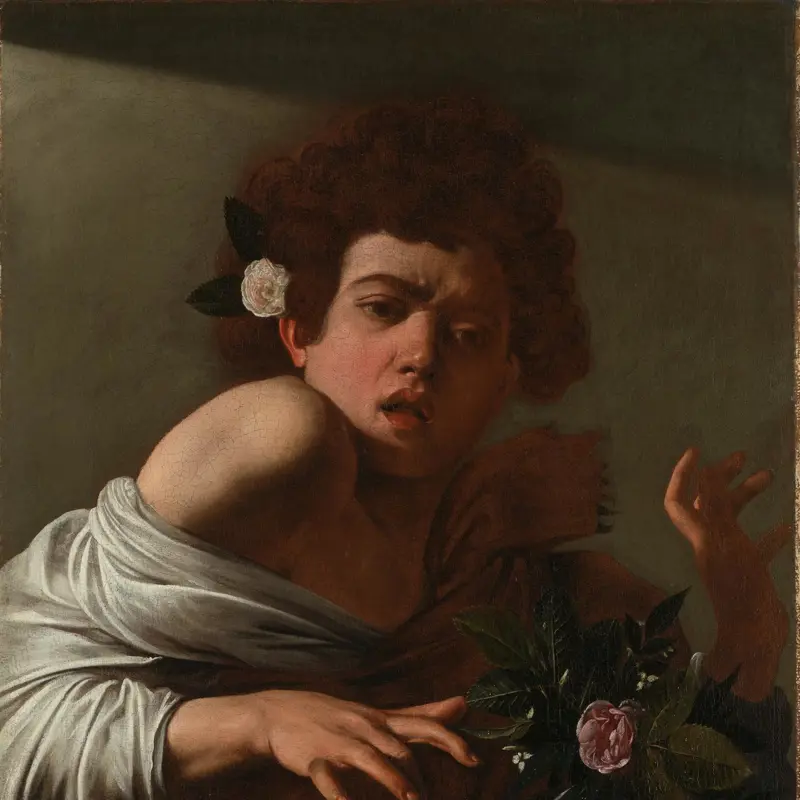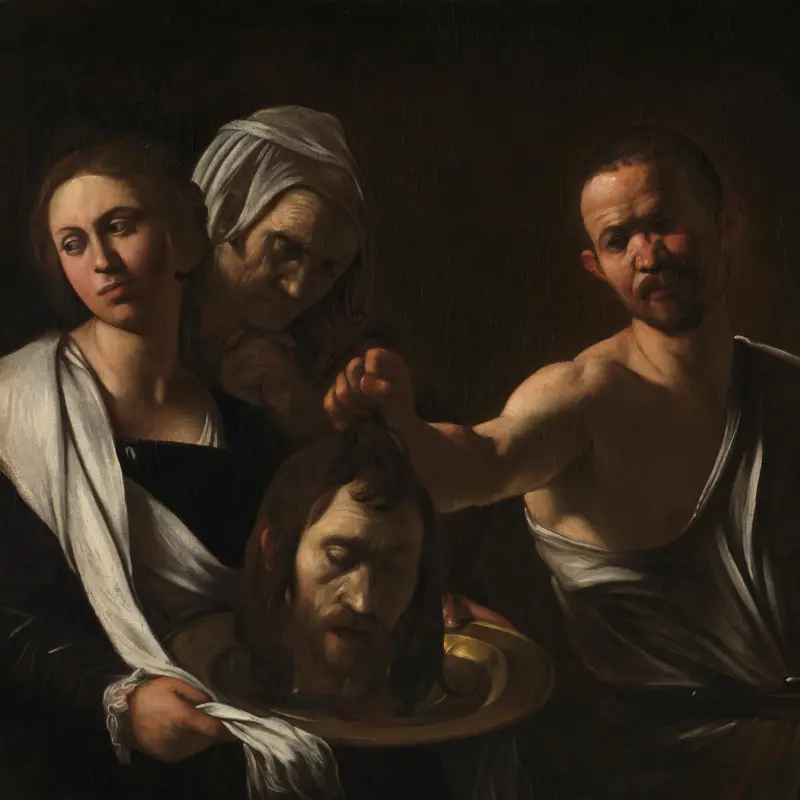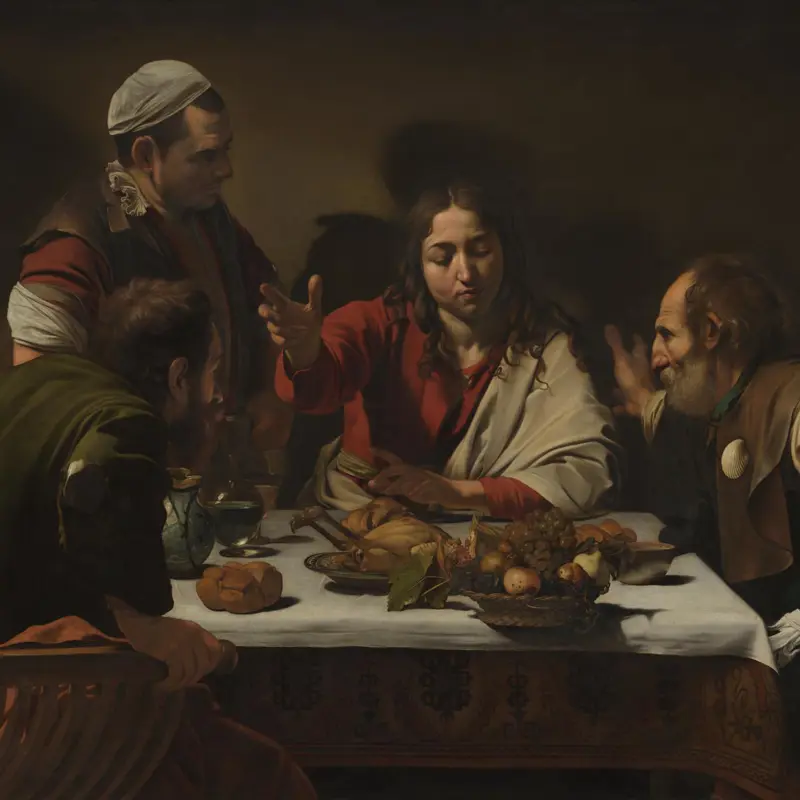Early successes
Arrogant, rebellious and a murderer, Caravaggio's short and tempestuous life matched the drama of his works. Characterised by their dramatic, almost theatrical lighting, Caravaggio's paintings were controversial, popular, and hugely influential on succeeding generations of painters all over Europe.
Born Michelangelo Merisi, Caravaggio is the name of the artist's home town in Lombardy in northern Italy. In 1592 at the age of 21 he moved to Rome, Italy's artistic centre and an irresistible magnet for young artists keen to study its classical buildings and famous works of art. The first few years were a struggle. He specialised in still lifes of fruits and flowers, and later, half length figures (as in 'The Boy bitten by a Lizard') which he sold on the street.
In 1595, his luck changed. An eminent Cardinal, Francesco del Monte, recognised the young painter's talent and took Caravaggio into his household. Through the cardinal's circle of acquaintance, Caravaggio received his first public commissions which were so compelling and so innovative that he became a celebrity almost overnight.
Rome
Caravaggio was a fast worker - but liked to play as hard as he worked. According to one of his biographers: ''after a fortnight's work he will swagger about for a month or two with his sword at his side and with a servant following him, from one ball-court to the next, ever ready to engage in a fight or argument, with the result that it is most awkward to get along with him''. (The sword was illegal - as with guns today, one had to have licence to carry arms.) Caravaggio was arrested repeatedly for, among other things, slashing the cloak of an adversary, throwing a plate of artichokes at a waiter, scarring a guard, and abusing the police.
Caravaggio's technique was as spontaneous as his temper. He painted straight onto the canvas with minimal preparation. Sometimes he abandoned a disappointing composition and painted new work over the top. Much to the horror of his critics, he used ordinary working people with irregular, rough and characterful faces as models for his saints and showed them in recognisably contemporary surroundings. In many paintings, such as the 'Supper at Emmaus', he makes his paintings appear to be an extension of real space, deliberately making the viewers feel as if they are taking part in the scene.
In 1606 Caravaggio's temper went a step too far. An argument with 'a very polite young man' described variously as over a woman, or a tennis match, escalated into a swordfight. Caravaggio stabbed his rival, and though he probably hadn't intended to kill him, the man died of his wound. Caravaggio chose not to face justice, but leave Rome. He had no doubt that he would quickly obtain a pardon.
Malta
Caravaggio went to Naples, and then to the island of Malta, an independent sovereignty and home of the Knights of Malta (a religious military order like the Knights Templars). If Caravaggio could become a Knight of Malta, he would be in a better position to seek a papal pardon for the murder. In return for a painting of the Beheading of St John the Baptist, he was granted membership.
His social standing in Malta was high - his reward included two slaves and a gold chain. All was going to plan, until his temper got him into trouble again. He got into a fight with another knight and found himself in prison. He escaped, but was expelled from the order.
Pardon and death
Caravaggio travelled around Sicily and then returned to Naples where he was involved in yet another bar brawl which left him badly disfigured. In the meantime, however, important friends in Rome had successfully petitioned the Pope for a pardon - Caravaggio could return.
He loaded his belongings onto a ship but, for some unknown reason, was then arrested and had to buy his way out of jail. By the time he was released, the ship and all his possessions had sailed without him. As he made his way along the coast he fell ill, perhaps with malaria, and a few days later, alone and feverish, he died.



